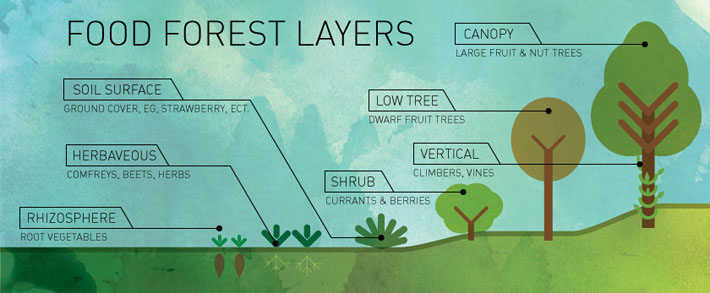
What is a food forest?
The first of its kind in the US, the Beacon Hill Food Forest in Seattle “is a gardening technique or land management system that mimics a woodland ecosystem but substitutes in edible trees, shrubs, perennials and annuals. Fruit and nut trees are the upper level, while below are berry shrubs, edible perennials and annuals.”
This is nothing short of revolutionary. Imagine if all the public spaces in our cities were full of edible foods free for the taking? The seed for the idea started in a permaculture design class. Then, momentum for the idea grew and a community group was started called Friends of the Food Forest.
It wasn’t easy to get the local community to agree to converting the seven acre public park into a self-sustaining food source. The natural objections ranged from “what happens if someone gets hurt picking fruit?” to “what if one person eats all the bluberries?”
To garner widespread support, the visionaries behind this project engaged in public outreach including mailing thousands of informational postcards, hosting informal events and soliciting input from all the members of the surrounding communities.
For the planners of this food forest, a picked over blueberry bush is not a problem, in fact that would be seen as a true measure of the park’s success.
The food forest is currently in the initial stages of development. The plan calls for a 1.75 acre test zone to be completed this year with a $100,000 grant. If the test is successful, the remaining seven acres will be developed in a few years. It’s a model for other cities to follow, and definitely one to watch.
